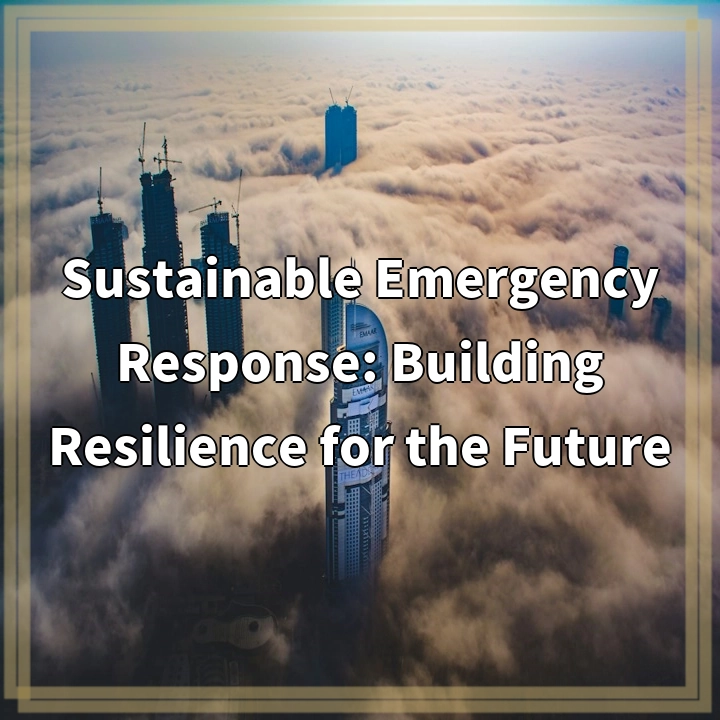
What is Eco-Friendly Sportswear?
Eco-friendly sportswear, also known as sustainable athletic apparel, refers to clothing and gear that are designed and manufactured with the environment in mind. This approach involves using materials, processes, and practices that minimize negative impacts on the ecosystem, promote recycling and reuse, and prioritize ethical labor practices.
Real-World Problems Associated with Eco-Friendly Sportswear
1. Limited Availability
One of the challenges with eco-friendly sportswear is its limited availability. While some well-known brands have started incorporating sustainable practices into their products, the majority of sportswear retailers still offer conventional options that may contribute to environmental degradation. This limited availability makes it difficult for consumers to make sustainable choices.
2. Higher Costs
Another significant issue is the higher cost associated with eco-friendly sportswear. The use of sustainable materials and ethical manufacturing processes often involves higher production costs, which are then passed on to the consumers. As a result, eco-friendly sportswear tends to be more expensive than conventional alternatives, making it less accessible for individuals with lower budgets.
3. Performance Trade-Offs
In some cases, eco-friendly sportswear may have performance trade-offs compared to traditional athletic apparel. Sustainable materials, such as organic cotton or recycled polyester, may not provide the same level of durability, stretch, or moisture-wicking properties as synthetic fabrics. This can discourage athletes from switching to eco-friendly options, particularly if their performance or comfort is compromised.
4. Lack of Consumer Awareness
The lack of consumer awareness and education about eco-friendly sportswear is another challenge. Many consumers are not aware of the environmental impact of traditional sportswear or the availability of sustainable alternatives. Limited marketing efforts and insufficient promotion of eco-friendly options contribute to this lack of awareness, hindering the widespread adoption of sustainable athletic apparel.
5. Complex Supply Chains
Sustainable sportswear often involves complex supply chains with multiple stakeholders. Ensuring that every step in the production process follows sustainable practices, from sourcing raw materials to manufacturing and distribution, can be a logistical challenge. Coordinating these efforts and maintaining consistency across the supply chain requires intricate planning and collaboration among various entities.
6. Greenwashing and Lack of Transparency
The issue of “greenwashing,” where companies falsely claim to be sustainable without genuine efforts, is prevalent in the sportswear industry. Lack of transparency regarding manufacturing processes, sourcing methods, and certifications makes it difficult for consumers to distinguish between truly eco-friendly sportswear and misleading marketing claims. This lack of transparency undermines consumer trust and slows down progress towards a more sustainable industry.
Overall, while eco-friendly sportswear presents a promising opportunity to reduce the environmental impact of athletic apparel, there are several real-world challenges that need to be addressed. By increasing availability, reducing costs, improving performance, raising consumer awareness, streamlining supply chains, and promoting transparency, the sportswear industry can overcome these obstacles and make sustainable choices more accessible for athletes and consumers alike.

Solutions for Eco-Friendly Sportswear
There are several potential solutions to address the challenges associated with eco-friendly sportswear and promote a more sustainable approach to athletic apparel:
1. Increasing Availability and Access
To encourage the adoption of eco-friendly sportswear, it is important to increase its availability in the market. Sportswear brands and retailers should expand their sustainable offerings and make them more accessible to consumers. This can include collaborations with eco-friendly designers, creating dedicated sections for sustainable products, and partnering with online platforms that specialize in ethical and sustainable fashion.
2. Affordability and Value for Money
Reducing the cost of eco-friendly sportswear is a crucial step to make it more accessible. Brands can explore cost-saving measures such as scaling up production, optimizing manufacturing processes, and leveraging economies of scale. Additionally, educating consumers about the long-term benefits and durability of sustainable apparel can help them understand the value for money and justify the higher upfront costs.
3. Innovation in Sustainable Materials
Continued research and development in sustainable materials can help address performance trade-offs. Brands should invest in finding alternatives that match or exceed the performance of traditional sportswear fabrics. This includes exploring advanced recycling technologies, bio-based materials, and innovative production techniques to create eco-friendly options that meet athletes’ demands for comfort, durability, and functionality.
4. Consumer Education and Awareness
Raising awareness among consumers is crucial to drive demand for eco-friendly sportswear. Brands can invest in marketing campaigns, collaborations with influencers and athletes, and media partnerships to promote the benefits of sustainable apparel. Educating consumers about the environmental impacts of traditional sportswear and the importance of making conscious choices can help shift their preferences towards more sustainable options.
5. Transparent and Traceable Supply Chains
Improving transparency and traceability in the supply chains of eco-friendly sportswear can build trust with consumers. Brands should prioritize certifications, such as GOTS (Global Organic Textile Standard) or Fair Trade, to validate their sustainable practices. Additionally, implementing blockchain or other technology solutions can enable transparent tracking of material sourcing, manufacturing processes, and labor conditions, ensuring authenticity and accountability throughout the supply chain.
6. Collaboration and Industry Standards
To overcome the challenges collectively, collaborations and industry-wide efforts are needed. Brands, suppliers, retailers, and industry organizations should come together to establish common sustainability standards, share best practices, and develop guidelines for sustainable manufacturing and sourcing. By working together, the entire sportswear industry can drive significant change and create a more sustainable future for athletic apparel.
By implementing these solutions, the sportswear industry can overcome the real-world problems associated with eco-friendly sportswear, making sustainable choices more accessible, and paving the way for a more environmentally friendly approach to athletic apparel.















